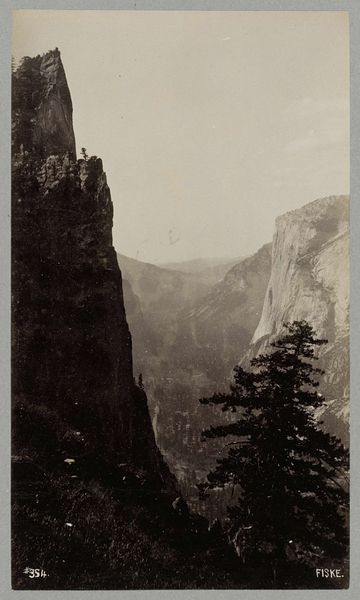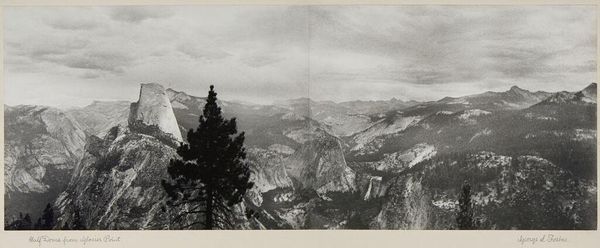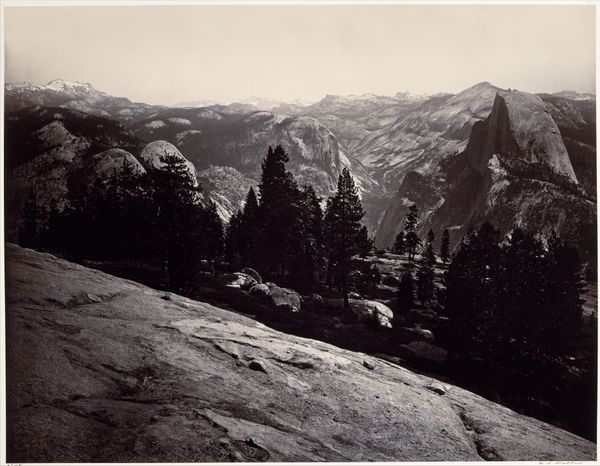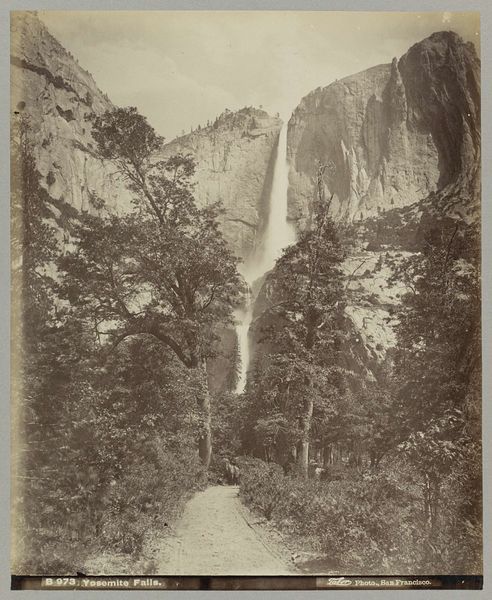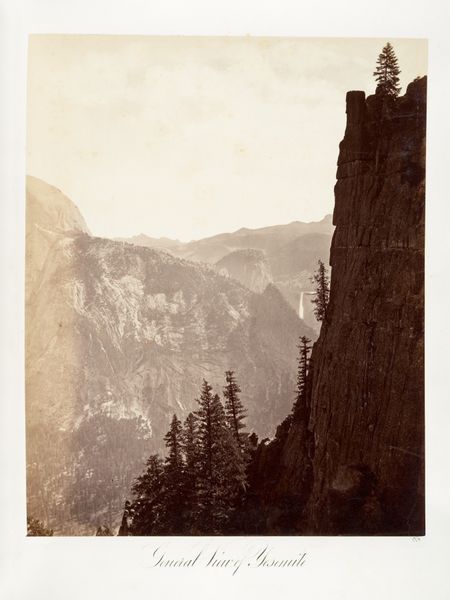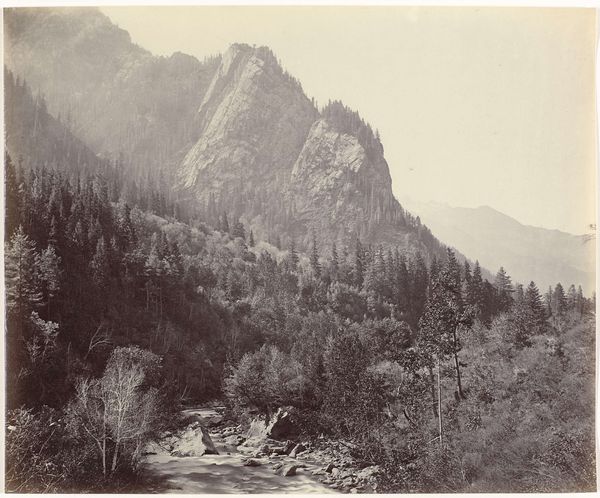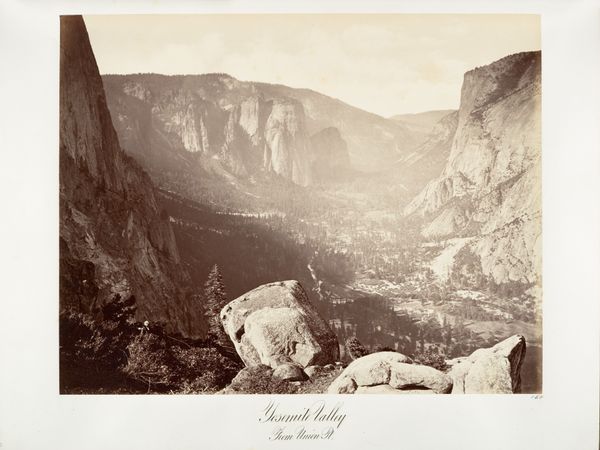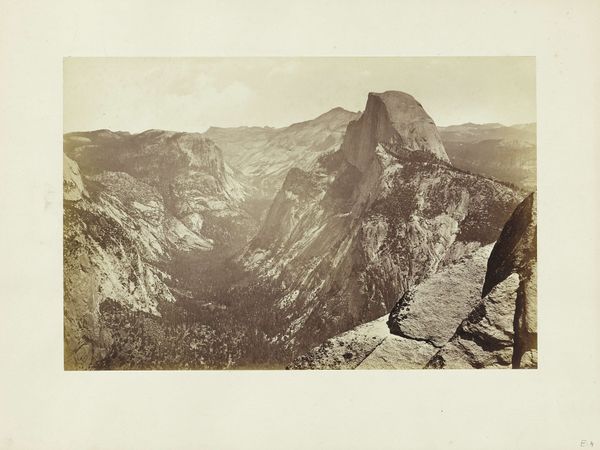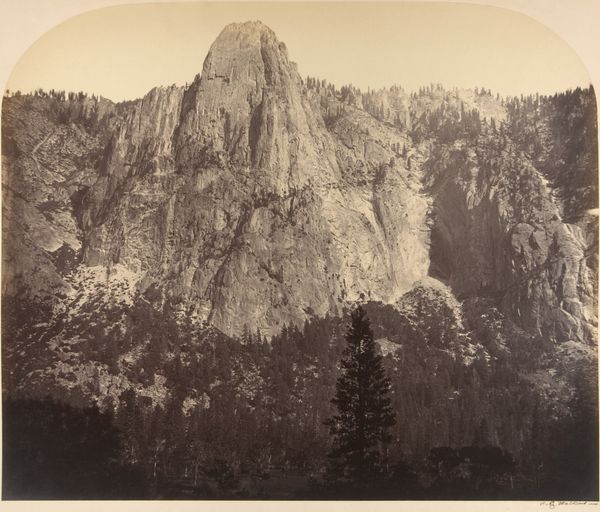
photography, gelatin-silver-print
#
landscape
#
photography
#
gelatin-silver-print
#
hudson-river-school
#
realism
Dimensions: 3 × 5 in. (7.6 × 12.7 cm) (image)
Copyright: Public Domain
Editor: This photograph, "The Yosemite Valley from the Mariposa Trail," was taken by Carleton Watkins in 1865. It’s a gelatin silver print and the grandeur is just breathtaking. The scale feels enormous, yet there's also this quiet stillness. What stands out to you? Curator: It's the imposing lone tree in the foreground that first captures my eye, the resolute witness of an expansive landscape. It’s not merely a depiction of Yosemite; it's an embodiment of the sublime, that 19th-century romantic ideal of nature's overwhelming power, an attempt to capture an American Eden. Do you see how it echoes the iconic representations of other cultural symbols? Editor: In what way? It feels very grounded in the physical space of the valley. Curator: But doesn't that verticality also recall the 'axis mundi', a symbolic center connecting the earthly and spiritual realms? This image presents more than a scene. The American West itself was potent symbolism in the mid-19th century, standing for Manifest Destiny, a sort of promise held by the vast open landscapes that was supposed to hold an unparalleled amount of freedom. The untouched landscape itself came to symbolize possibility, the nation's potential for renewal and expansion, the sublime mixed with promise. Watkins was creating a powerful narrative with familiar icons. Editor: I hadn't thought of the West as an idea that was visualized through symbolic photography, beyond just as a geographical place. So much meaning imbued in this photograph. Curator: Exactly! Visuals transmit deep meanings, and once you attune to their coded messages, new meanings abound. Editor: I'll definitely carry that understanding with me. Thanks so much for your insights.
Comments
No comments
Be the first to comment and join the conversation on the ultimate creative platform.

